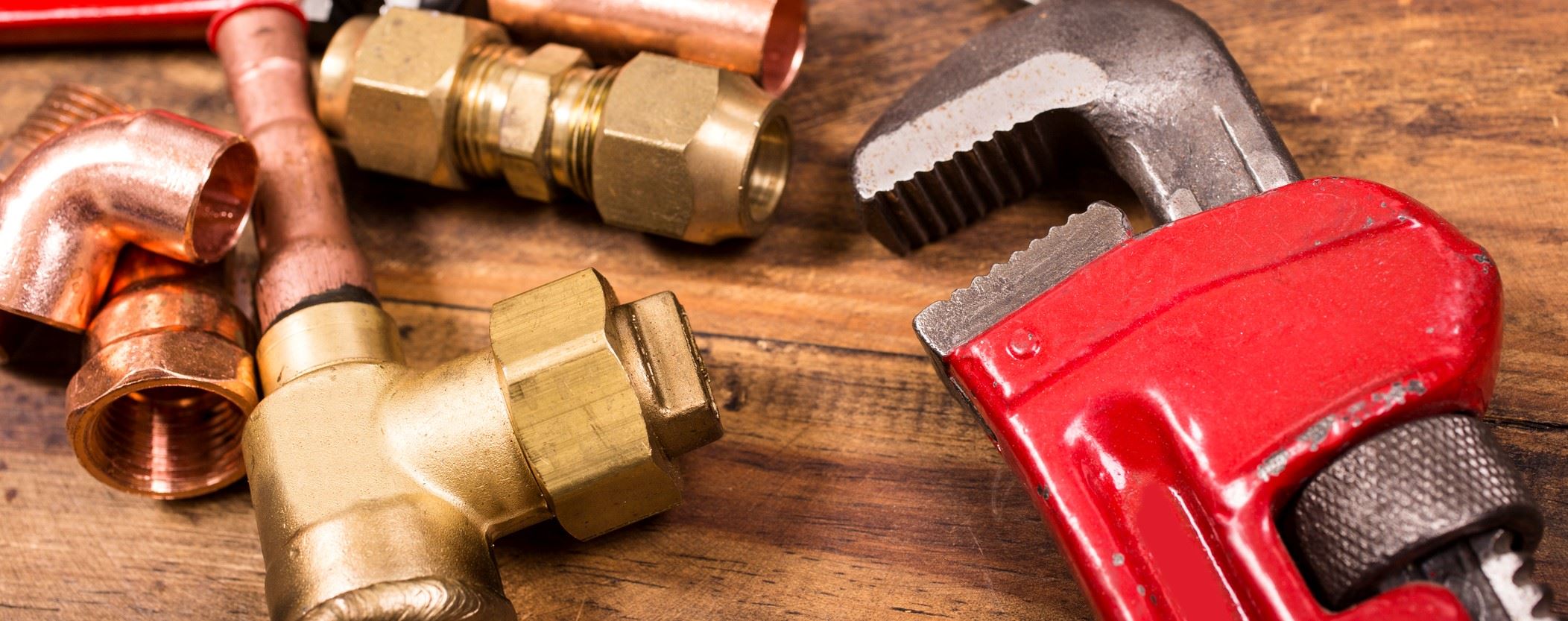Plumbing is complicated but you don’t need to understand pressure ratings, hydrodynamics or flow rates to know that you can’t flush floss or put leftover lasagna in your garbage disposal.
Here are six plumbing fundamentals that will keep your plumbing operating smoothly.
1. Know the Location of the Main Shutoff Valve
In the event of a burst pipe, the last thing you should do is Google “Where is my main shutoff valve?” Locate the valve that operates your main water supply now so you’re prepared during an emergency.
Your main water valve controls all of the water coming into your house. A twist of the valve or pull of the level will cut off your water supply, effectively stopping the leak. The valve may be located in one of several places:
The basement: Find the pipe extending up through the floor. On it, you’ll find either a valve or a lever. That’s your main water shutoff valve.
The garage: If your home is built on a slab, the main water shutoff valve might be in here. Check near the water heater or along the wall facing the street.
The crawlspace: Look in the crawlspace along the front of your house. Not there? Keep looking.
By a hose bib: Look for a horizontal pipe connecting to your house. It’s likely located near a hose bib.
If you still can’t find it, check your home inspection report. In it, there’s a section detailing your plumbing. This should note the main shutoff valve’s location. If all else fails, call your water utility district. They may be able to point you in the right direction.
2. Know What Not to Flush
Your toilet is designed to flush toilet paper and waste. That’s it! That’s all you can flush. Everything else goes in the trash. These include:
-
Q-tips
-
Floss
-
Cotton balls
-
Feminine hygiene products
And perhaps the biggest offender of them all: flushable wipes! Sanitary napkins, moist toilettes, whatever you call them, are not flushable, despite what the package may tell you.
3. Know How to Stop an Overflowing Toilet
You’re a guest at someone’s house when, after flushing the toilet, you recoil in horror as the water in the bowl threatens to rise above the rim. Do you…
A.) Come up with a reason to leave (your aunt died) and hastily excuse yourself?
B. ) Tell the host the bathroom was already like that before you used it?
C.) Stop the toilet from overflowing?
Yes, C is an option!
-
Remove the lid
-
Roll up your sleeve
-
Reach down inside the tank
-
Close the flapper at the bottom
If you act fast, you’ll prevent a real mess and save yourself from social ruin.
4. Know Which Plunger to Use
You’re using a flat cup plunger to unclog that toilet? Amature move! Your basic plunger is designed for sinks and bathtubs. A clogged toilet requires a specialized plunger. The suction end of a flange plunger features an extended sleeve to fit snug within the contours of the drain. This creates a stronger seal to better bust up stubborn clogs.
5. Know What Can and Cannot Go Down Your Disposal
Your in-sink garbage disposal is the workhorse of the modern kitchen, pulverizing produce, and other foodstuffs that would otherwise sit in the trash, stink up your home and gather flies.
But this convenience comes with a cost. Goopy food mush can make a real mess of your drains. Starchy foods (pasta, potatoes and the like) are particularly problematic because they swell with moisture and cling to the drain’s interior.
Celery and other stringy produce, meanwhile, can jam up the disposal’s inner workings.
Toss these foods in the garbage or better yet, compost them.
6. Know When to Call a Plumber
Certain jobs you can handle yourself — fixing a leaking toilet flapper or flushing a water heater — but more complex jobs require an expert. Led astray by a YouTube tutorial, many DIYers end up with major disasters. If you suspect an issue is beyond your ability to fix, it’s best to call in a professional from Mark Johnson Plumbing. Call (318) 257-6167 to schedule an appointment.


